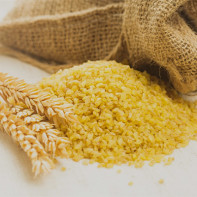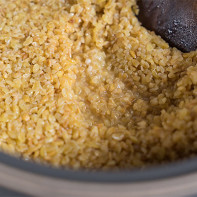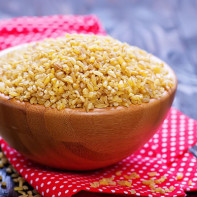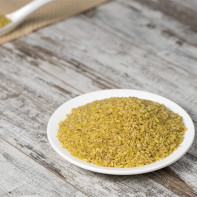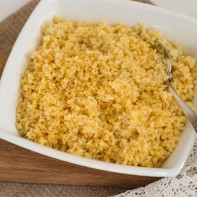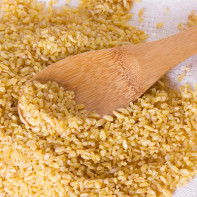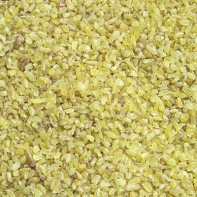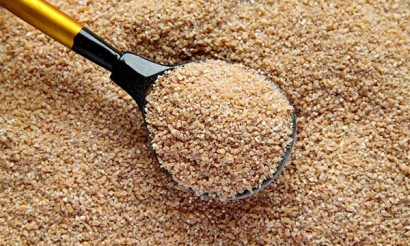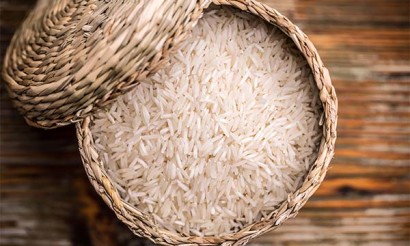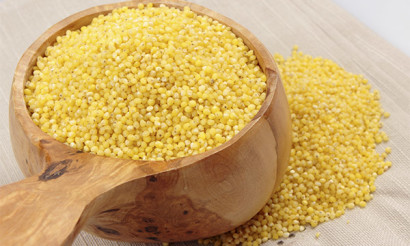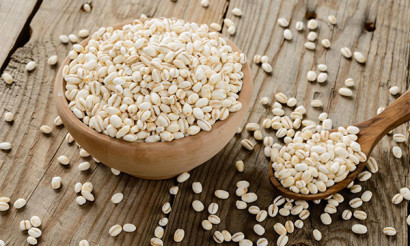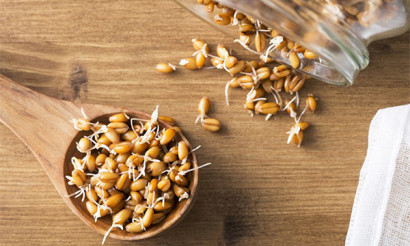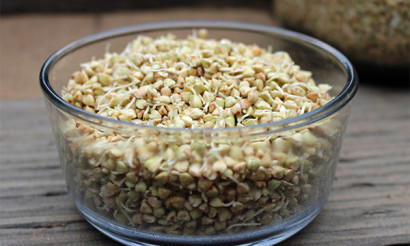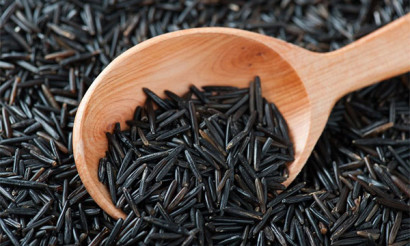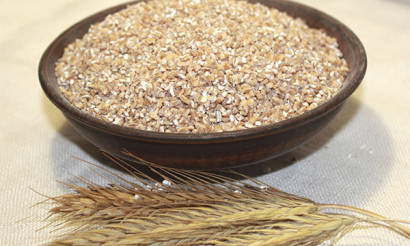Bulgur: what it is, composition and calories, useful properties
Bulgur is a food product that has been known for about 3500-4000 years. It was actively used in Turkey, the Middle East and some Balkan countries. Bulgur was among the military supplies during the expeditions of the Mongol emperor Genghis Khan. The Chinese emperor Shen Nung ranked bulgur among the sacred plants: rice, corn, barley and soybeans in 2800 BC. The ancient Babylonians, Hittites, and Jews used boiled and dried wheat about 4,000 years ago, and the Egyptians and other civilizations in the eastern Mediterranean ate boiled bulgur in 1000 B.C.
- What is bulgur
- Types
- How bulgur differs from pearl barley
- Composition and calories
- What is useful for bulgur
- General benefits
- For Women
- For Men
- Is bulgur useful during pregnancy and the lactation period?
- At what age can a child be given bulgur
- The useful properties of bulgur grits for weight loss
- Bulgur in medicine
- For Diabetes
- For pancreatitis
- For gastritis
- For bowel
- For gout
- For cholecystitis
- In constipation
- Harms and Contraindications
- How to choose and store bulgur
- Bulgur in cooking
- How to cook
- What to eat with
- Do I have to wash it before cooking it?
- Interesting facts about bulgur
What is bulgur?
Bulgur is a wheat grain that is first steamed, dried, and then stripped of its shell. The grains have a yellow-brown color.
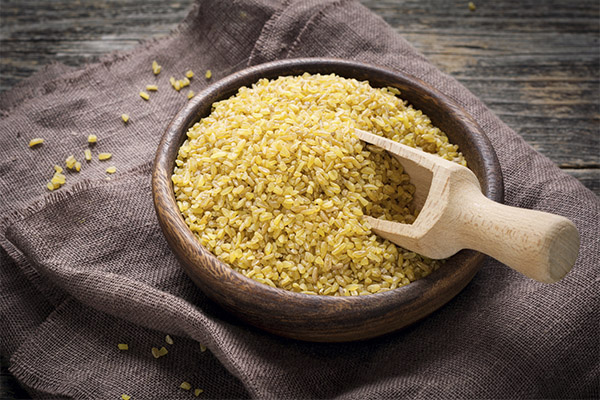
Bulgur grits are high in protein and low in fat. It is also worth noting that this product has a low glycemic index and therefore will not cause spikes in blood sugar. Half a cup of this cereal contains more fiber and fewer calories than other grains (twice as much fiber as in brown rice), which affects the regulation of digestion. Bulgur does not cause bloating. It is recommended for people with diabetes, especially children. Due to the content of B vitamins, folic acid, this cereal is recommended to add to the diet of women who are in the position.
Types
As a rule, bulgur is divided into three types (according to the degree of grinding): small, medium and large. Bulgur is suitable for preparing a large number of different dishes, whether it is a salad or dessert. It is often used as a substitute for rice or couscous.
So, bulgur is divided into several types according to the degree of grinding. But it can also be divided into varieties according to other characteristics.
- Whole. Characterized by whole grains of wheat, which have not been crushed, but have been processed.
- Coarse-grained. These grains are rather small. Suitable for making pilaf and dolma.
- Midyat. Grain also small, suitable for pilaf.
- Fine. Crushed grains. Can be used as a salad dressing, also suitable for dessert.
- Dark. The chemical composition is very similar to the other grains, but the grits are quite high in calories.
- Unmilled. Grains without a shell. Has a high content of useful substances.
How is bulgur different from pearl barley
- Perlovka is a groat that is made directly from barley. It is used in the production of a whole grain, from which the shell is removed.
- Bulgur, in turn, is a cereal made from wheat that has been boiled, then thoroughly dried and then crushed.
Despite the fact that bulgur and pearl barley are very similar to each other and many people believe that they are the same, yet these cereals have some differences. The main ones are that pearl barley is a grits of grains with the shell removed, while bulgur is a grits that have been processed: steamed, dried, and then crushed.
Composition and calories
Many experts claim that bulgur is one of the healthiest cereals in the world. Rich in complex carbohydrates, protein, and fiber, it is a great food to include in your diet for people following vegetarian and vegan diets.
- Carbohydrates. One serving of cooked bulgur contains 151 kcal (about 83 kcal in 100 grams of cooked cereal) and 33.8 grams of carbohydrates, about 8 grams of fiber and a very small amount of naturally occurring sugar (0.2 grams). The rest of the carbohydrates in bulgur are starches. Although the cereal cannot be called a low-carb product, it is important to note that the fiber it contains makes it an extremely rich and nutritious food source.
- Fats. Bulgur contains a small amount of fat (less than one gram) as long as the grits are cooked without any additional oils.
- Protein. One serving of bulgur contains about 5.6 grams of healthy protein. Protein is the building material for hair, skin, and nails.
- Micronutrients. Bulgur is a good source of iron, manganese, phosphorus and selenium; it is also rich in B vitamins.
- Minerals. Bulgur is rich in minerals (calcium, phosphorus, magnesium, sodium, potassium, chromium, iron), vitamins (B1, B2, B3, B5), fiber, folic acid, gallic acid and antioxidants. Gallic acid has pharmacological (antiseptic, antiflora and astringent) properties, as well as the ability to block carcinogens. An interesting fact is that the chromium in bulgur can help reduce cravings for sweets.
The glycemic index of this product is low at 46. Thus, it can be included in your menu almost every day. It is worth noting that compared to other wheat cereals, bulgur is considered one of the healthiest products, as it has the lowest glycemic index, the lowest number of calories, as well as contains a lot of fiber.
What is bulgur good for?

General benefits.
- Helps you lose weight. There are about 83 kcal in 100 grams of cooked bulgur grits. However, due to its low fat content and high amount of soluble fiber, it is one of the useful foods during weight loss. The fiber swells in the stomach, creating a feeling of fullness for a long time. Therefore, bulgur effectively helps to control weight.
- The cereal is rich in iron. A person needs to get enough iron to constantly replenish its losses. In addition to being involved in transporting oxygen to the blood, iron is also part of every cell in the body. This element is an important component of enzymes and proteins, and it helps form collagen, which supports the skin, muscles and immune system. Just 1 cup of cooked bulgur contains 1.75 milligrams of iron, which is 22 percent of the recommended daily dose for men and 10 percent for women.
- The cereal is rich in carbohydrates and fiber. If you consume just 1 cup of cooked bulgur, you can get 34 grams of carbohydrates. That's 26 percent of the required daily dose. In addition to energy-supplying carbohydrates, the same serving contains 8 grams of fiber. Those who are not used to consuming a lot of fiber should gradually increase the amount to avoid side effects such as gas, bloating and diarrhea.
- Strengthens bones. The many vitamins found in large quantities in bulgur, especially zinc, iron, magnesium and chromium, help protect bone health. In addition, eating grits promotes strong bone structure in children. Some health experts claim that the iron content of bulgur is even higher than that of spinach. Because of this, consumption of this cereal reduces the risk of diseases caused by iron deficiency.
- Prevents Alzheimer's disease. People who get enough vitamins and minerals in childhood are less likely to develop mental dysfunction in old age, which can lead to Alzheimer's disease. Therefore, eating bulgur prevents mental retardation, including Alzheimer's disease.
- It strengthens tissues. The vitamins and minerals in bulgur are important for tissue health. The cereal is one of the rare sources that supports tissue health and strengthens tissues, also protects muscle health and helps control muscle fat levels.
- The benefits of bulgur for hair and skin health. The many vitamins and minerals found in bulgur are important for hair and skin health. Enough iron eliminates skin problems and hair loss.
- Supports the nervous system. People who are nervous or under constant tension and stress should consume bulgur all the time. It is rich in B vitamins and magnesium, substances that are responsible for the normal functioning of the nervous system and thus help maintain mental balance. Vitamin B1 (thiamine) improves memory and thinking, while vitamin B2 (riboflavin) relieves headaches and dizziness. In turn, vitamin B6 (pyridoxine) promotes the absorption of magnesium and is essential for the production of neurotransmitters: serotonin, dopamine - the lack of which can cause depression and anxiety. In addition, vitamin B9, or folic acid, improves the nervous system and reduces nervous tension. Magnesium facilitates the delivery of glucose to the brain. It is also necessary for the production of neurotransmitters. The carbohydrates in bulgur grits also improve mood because they increase levels of serotonin, the "happiness hormone."
- It prevents gallstones and sand in the gallbladder. Studies have shown that eating bulgur can help reduce the likelihood of gallstones and sand in the gallbladder. There are two main types of stones: pigmented stones, which are smaller and darker, and cholesterol stones, which make up 90% of all gallstones found in the gallbladder. Insoluble fiber helps food move more quickly through the small intestine. Fiber also reduces bile secretion and helps the human body control insulin production. Insoluble dietary fiber is also effective in lowering triglyceride levels.
- Heart benefits. Bulgur grits are rich in minerals that are responsible for the proper functioning of the cardiovascular system. Potassium helps lower blood pressure, and during exercise, it increases heartbeat to better oxygenate the body. Calcium plays a similar role, which is necessary for the contraction of the heart and therefore plays an important role in the proper pumping of blood to all tissues of the body. Magnesium dilates the arteries and thus can protect a person from a heart attack. It also helps regulate calcium levels and improves potassium absorption. Sodium along with potassium regulates muscle tension and affects nerve cell stimulation. Cereal is also rich in fiber, which lowers "bad" cholesterol. This reduces the risk of atherosclerosis, which leads to heart attack, stroke or pulmonary embolism and thrombosis. Bulgur can also help treat anemia because it is rich in iron and folic acid.
- It reduces the risk of developing cancer. The insoluble fiber found in bulgur reduces the risk of certain cancers. A serving of bulgur-based porridge provides about 34% of the daily requirement for fiber, which reduces the likelihood of breast cancer and other forms of cancer.
- Fights diabetes. Cooked bulgur grits contain 18.58 grams of carbohydrates (in 100 grams), of which only 0.1 grams are simple sugars. Not surprisingly, it has a low glycemic index. Consequently, it does not cause rapid sugar spikes, so diabetics can consume bulgur without any fear. Bulgur wheat contributes to a slower rise in blood sugar levels than rye bread or whole wheat bread.
- It contains important minerals and vitamins. Bulgur wheat provides the human body with many nutrients that people often lack due to poor nutrition. Cereal is a good source of iron, B vitamins, magnesium and manganese, which help maintain a healthy metabolism and keep you healthy and alert.
For women
The substances found in cereal are beneficial to the quality and structure of hair. The hair becomes silky, also the growth rate of curls increases. Regular consumption of bulgur helps to restore the natural complexion. From this grits you can also make a variety of creams for the skin. Means based on bulgur help cleanse the dermis of dirt and keratinized particles, as well as smooth out wrinkles. This product helps to inhibit the aging process and increases the elasticity of tissues.
For men
Cereals can be very often found in the diet of men who are intensely engaged in sports or associated with regular physical activity. The porridge helps to provide a feeling of fullness for a long time. Bulgur is an excellent digestible cereal, which does not cause stomach heaviness, enriches with carbohydrates, proteins and a lot of dietary fiber.
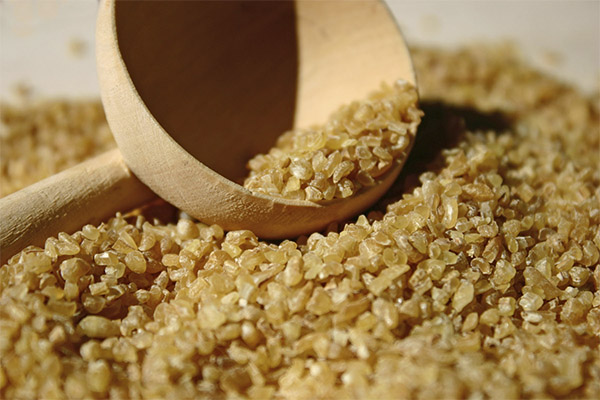
Also this product affects the normalization of the functions of the nervous system. Cereal is a remedy that can combat stressful states, and can also prevent depression and apathy. Bulgur is very useful for those who are engaged in mental activity: the substances that are in the grits affect the increase of efficiency, give vigor and energy.
Is bulgur useful during pregnancy and pregnancy with childbirth?
Cereal is rich in vitamin B9, that is, folic acid (18 micrograms per 100 grams). This is very important for pregnant women, especially in the first trimester, because this vitamin can prevent the occurrence of congenital neural tube defects in the fetus, hernia of the nervous system and cleft spine.
When breastfeeding
A diet high in folic acid is also necessary during breastfeeding. A folic acid reserve during lactation should be 0.5 mg/day. Since bulgur is rich in folic acid, it will be very useful during the breastfeeding period.
At what age can I give bulgur to my baby?
The recommended age at which you can include bulgur in a child's diet is 4 years old. At this age, it is already possible to give children dishes that contain groats. Wholemeal porridge can be included in the diet from the age of 7 years.
Useful properties of bulgur grits for weight loss
People who are trying to get rid of excess weight, it is recommended to regularly consume bulgur grits. A cup of cooked grits contains about 160 calories. In addition to being low in calories, the grits are rich in fiber. Dietary fiber has many beneficial properties for the body. For example, they give a feeling of satiety and satisfaction after a meal.
Bulgur also contains protein, which is an essential part of any healthy and balanced diet. When one tries to minimize or even eliminate meat from one's diet, there is a risk that one will not get the necessary amount of protein. But this problem can be solved by regularly consuming bulgur, as this cereal is a good source of vegetarian protein (one cup of cooked bulgur wheat contains about six grams of protein).
It is also worth noting that bulgur is a low-carb product, so it can replace pasta or rice. Extremely rich in micronutrients and protein, bulgur is also a very good appetite suppressant.
Bulgur in medicine
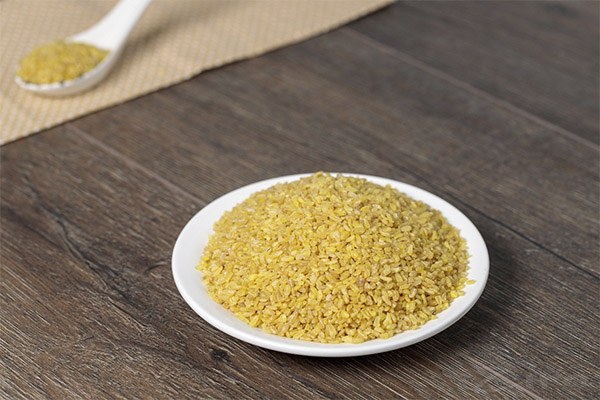
For Diabetes
Bulgur grits have a very low GI (glycemic index) of 46, which means that its consumption does not cause sugar spikes. Research has shown that bulgur causes blood sugar levels to rise more slowly than rye or whole-grain bread. This makes it safe for diabetics and people at high risk of developing diabetes.
For pancreatitis.
Experts say that the consumption of bulgur in pancreatitis is quite acceptable. Negative effects of this product can produce in the case of gluten intolerance or allergic reactions to cereals. This means that this cereal can be included in the diet with pancreatitis, except for periods of exacerbation of the disease, when a strict diet is prescribed.
Gastritis
Despite the fact that bulgur has a lot of useful properties, with gastritis you need to limit its consumption. Cook bulgur only with water, preferably porridge should be quite viscous. During exacerbations, it should be excluded from the diet at all.
For the intestines
Bulgur is a source of fiber, which improves the digestive tract. Therefore, the grits support the digestive process, improves intestinal motility and prevents constipation, and some experts say that even colorectal cancer.
In gout
A variety of cereals, including bulgur, are allowed for gout. It can be used as a main product, as well as an ingredient in various dishes.
For cholelithiasis
For cholelithiasis, it is recommended to consume bulgur on a regular basis, but in small portions. The main thing is not to add spices and fat while cooking the porridge. The most appropriate option would be to cook soups.
In case of constipation
The high fiber content of cereal is great news for people who have slow intestinal motility or constipation. Regular consumption of porridge will help to normalize intestinal function and, in addition, prevent the formation of diseases and infections, which often occur with chronic constipation.
Harms and contraindications
Although this cereal is extremely healthy, it can also be harmful if consumed in too large quantities. For stomach ulcers, reflux, or hyperacidity, frequent consumption of coarse bulgur porridge can aggravate the symptoms of these conditions. In addition, people with gluten disease or gluten allergies will have to give up bulgur grits.
How to choose and store bulgur
The first thing to do is to see if the cereal package is intact. It is recommended to choose a transparent box or soft packaging, so that you can assess the quality of groats. It is worth paying attention to the grains: they should not stick together, it is desirable that the grits are crumbly.
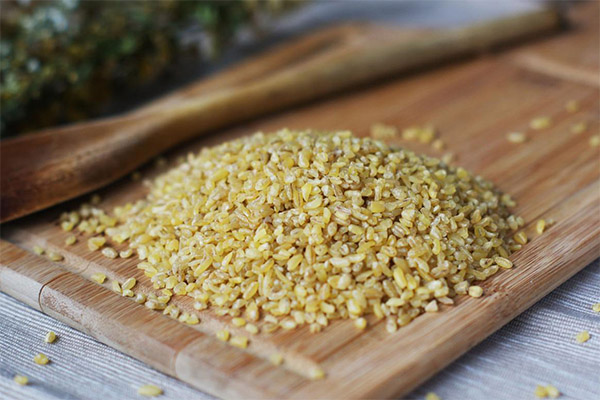
Store bulgur should be in a tightly closed glass container.
Bulgur in cooking
Bulgur is widely used in cooking. For example, in Turkish cuisine, this grits is the main side dish, perfectly combined with meat and fish. Very often you can see that traditionally rice dishes are replaced by bulgur, for example, when stuffing peppers or cooking stuffed cabbage rolls.
How to cook
To make a dish made with bulgur grits tasty, you need to know some rules. The first thing to pay attention to is the ratio of water to grits. Boil bulgur in water in the ratio of 1 to 2. It is acceptable to use milk for cooking. Some people soak the cereal before cooking, which is not necessary. In this form, the grits will cook faster, but the risk of overcooking the bulgur increases. Therefore, to prevent groats from turning into mush, you should not soak them, and, conversely, if you want porridge, you can pour water over the groats before cooking.
What to eat with
Bulgur is a product that goes with almost all ingredients. The most common use of the grits is to make porridge. In it, they add apricots, raisins and dates. Cereals are great as an ingredient for various salads and soups. Also this product is used when cooking meat. For example, grits go well with pork. To add flavor to the meat, you should bake it together with grits. It can be served together with meat, fish, vegetables, stuffed peppers and tomatoes.
Do I Wash Before Cooking?
Many people mistakenly believe that bulgur grits must be washed before cooking. But it is not necessary to do this, because the grits are already pre-washed and dried.
Interesting facts about bulgur
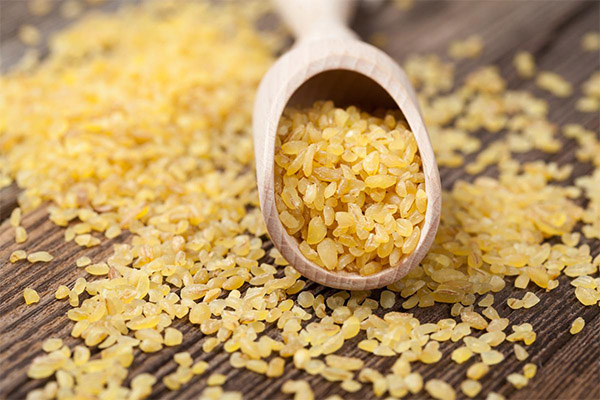
- Bulgur is considered one of the world's oldest cooked porridges.
- Bulgur was used during World War II for two purposes: as a staple food for the troops and as a cleaning agent for airplanes.
- Bulgur is mentioned in Jimmy Buffett's song "Cheeseburger in Paradise."
- Wheat was used to simulate sand in the movie Night at the Museum: The Battle of the Smithsonian Institution.
- There is mention of bulgur grits in the Old Testament.
- The grains increase significantly when boiled, so you need to match the amount of grits to the amount of grits during cooking.
- Bulgur does not need to be washed! Since it is washed and cooked at the production stage, the grits do not need to be washed before cooking.
- Bulgur is resistant to mold and has a longer shelf life than other foods.
«Important: All information on this site is provided for informational purposes only For informational purposes only. Before applying any recommendations, consult a health care professional. specialist. Neither the editors nor the authors shall be liable for any possible harm caused by materials."

